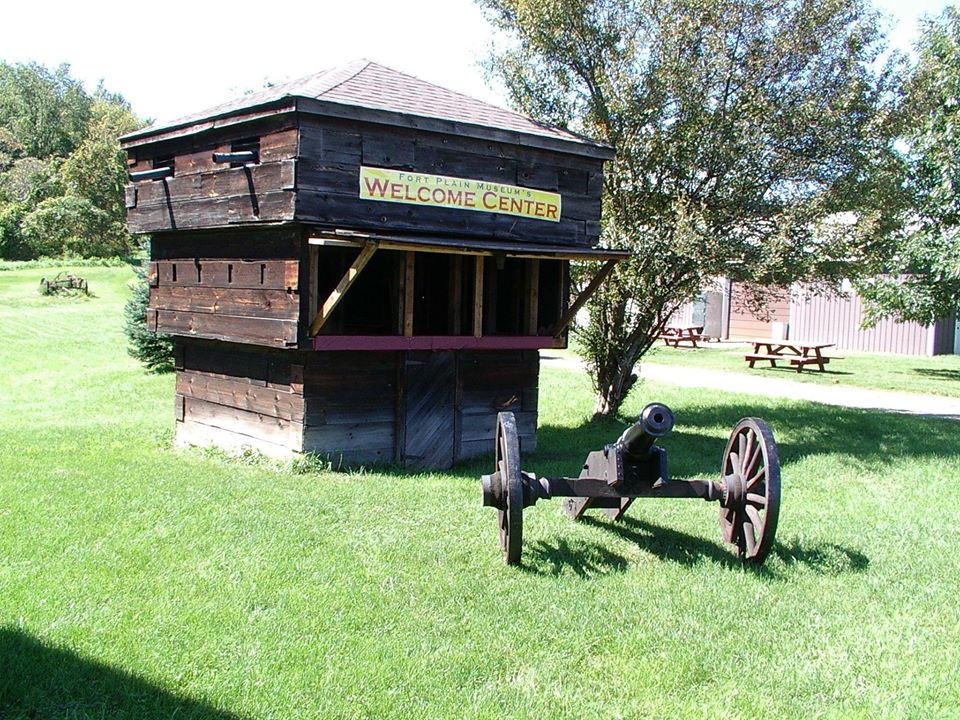Getting Fort Plain Sorted Out
I’ve also enjoyed the Fort Plain Museum’s online bookstore, which stocks a wide range of books about the American Revolution, well beyond the titles on its region. The store often offers generous discounts on recent titles and free shipping for larger orders.
But on my visits I’d never had time to visit the museum itself, not until this week. It provides a thorough account of the fight between the U.S. of A. and the British Empire over New York’s Mohawk Valley.
I must confess I’d need to take better notes to sort out all the “forts” in the area, ranging from a large construction like Fort Stanwix to little more than a big farmhouse with shutters and a bunch of soldiers assigned to it.
I felt reassured, though, that I’m not alone in that confusion. In fact, the struggle to tell the Mohawk Valley fortifications apart apparently reached up to the highest level of the Continental Army. For this I’m relying on a roundup of period quotations from Norm Bollen (P.D.F. download).
As early as 1780, an invoice documents that people living around where Otsquago Creek joined the Mohawk River called their fortification Fort Plain. But when Gen. Robert Van Rensselaer made it his headquarters later that year, he dubbed it Fort Rensselaer.
There was a geographic and class division between the frontier farmers and Gen. Van Rensselaer, aggravated by a court-martial pitting him against the county’s militia officers. This resentment came out in people living near the fort continuing to call it “Fort Plain.”
Even when Col. Marinus Willett took over and proved more popular and more militarily successful, locals still sent him messages about “Fort Plain.” Willett regularly crossed out that name and wrote in “Fort Rensselear” (close enough by 18th-century standards).
In February 1782 the French military engineer Villefranche de Genton sent Gen. George Washington a “plan of a Redoubt with a Block-house the inside proper to contain two hundred men, and large magazines, as well for ammunition as provisions” for “Fort Ranceler,” as requested by Willett.
Washington thanked the engineer for his work, and in April sent a bunch of paperwork to Gen. Philip Schuyler, including a contract to finish that blockhouse at Fort Rensselaer. Schuyler was Gen. Robert Van Renssalaer’s brother-in-law, so we can be sure of what he called that location.
At the end of May, Col. Benjamin Tupper of Massachusetts took over at that fort. But when he wrote to Washington about the situation, he used the local name:
There is an unfinished Blockhouse at Fort plain which if compleated would be a strong barrior in that Country; I think if some money could be sent on for the Meterials we can procure workmen among the levies to compleat it.Washington immediately wrote back to say it was “out of my Ability to furnish you with any Money for the Completion of the Block House at Fort plain.” This despite how he’d already asked Schuyler to start work on the blockhouse at Fort Rensselaer.
On 24 June, Gen. Washington traveled up to the Albany region to inspect the Continental posts and supply depots. As part of that trip, he appears to have learned that Fort Rensselaer and Fort Plain were the same place, and it still needed a blockhouse. On 2 July he ordered the quartermaster to send supplies there. Meanwhile, the latest commander of the post, Col. George Reid, was careful to refer to it in his letters to the commander-in-chief as “Fort Plain, or Ransler.”
After the war, the fortification was no longer needed. It disappeared by the end of the century. But the memory of it was strong enough that when the settlers living around Otsquago Creek needed a name for their village, they chose Fort Plain.




